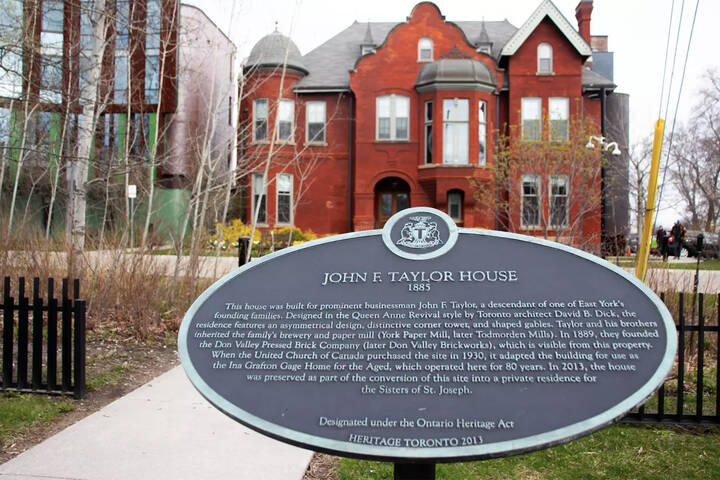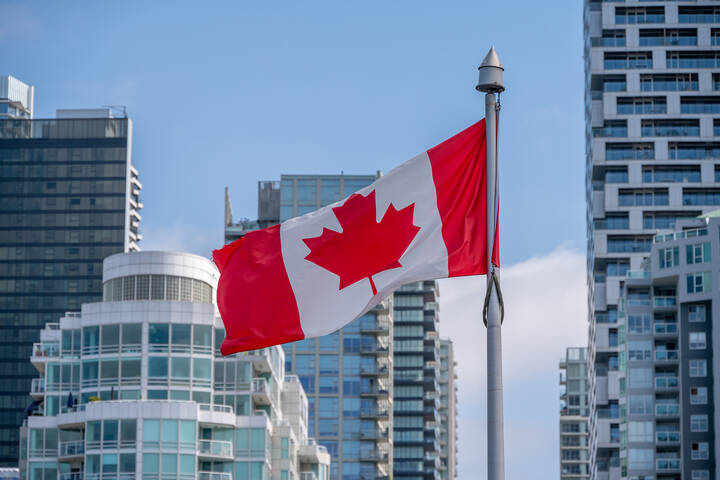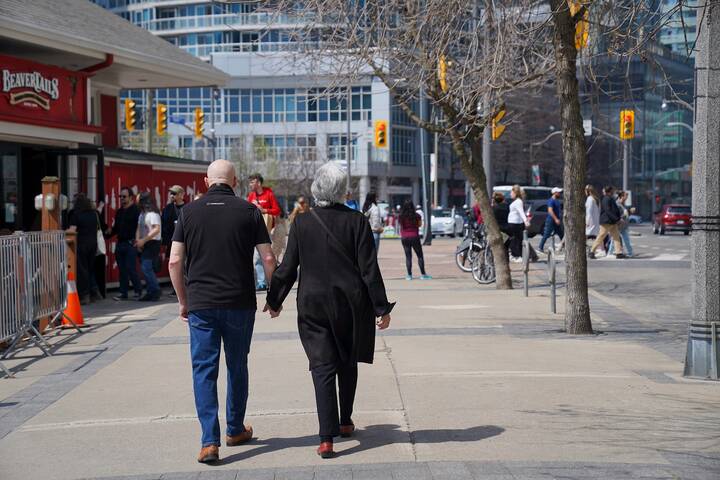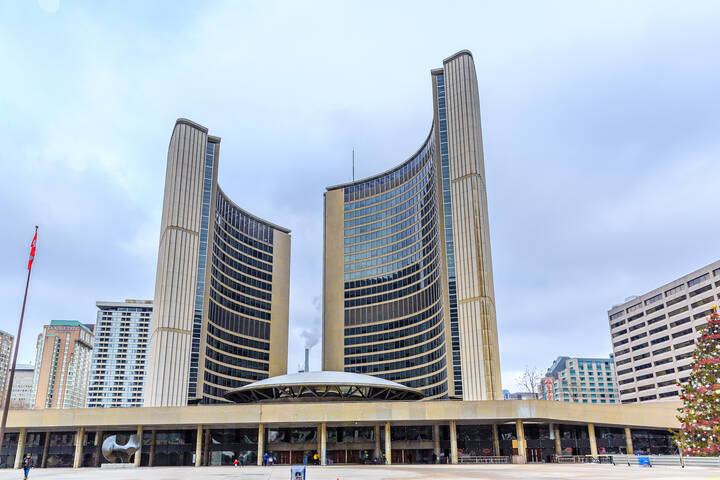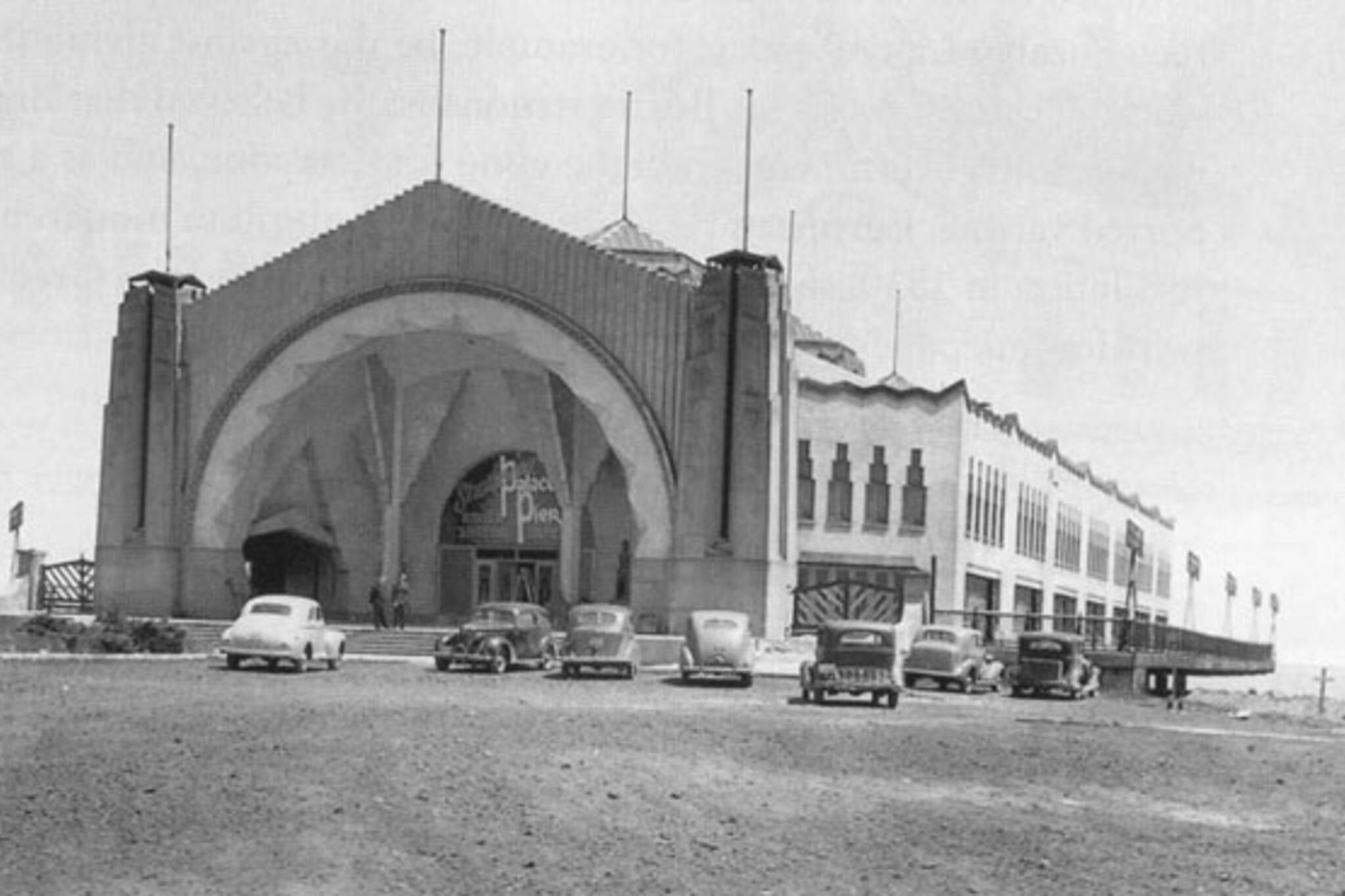
The slow rise and rapid fall of the Toronto Palace Pier
In the late 1800s and early 1900s, every waterfront town and city hopeful of luring tourists wanted to build a pleasure pier. Brighton on England's south coast had the West Pier, Atlantic City had the Steel Pier, and Toronto was supposed to have its own giant structure, protruding 537 metres into Lake Ontario.
The first Toronto recreational pier was conceived in 1912 by the Harbour Commission as part of a massive series of upgrades to the waterfront and Port Lands. Had it been built, it would have been located opposite the CNE, as Mark Osbaldeston notes in his book Unbuilt Toronto 2.
A few years later, the English "Provincial Improvement Corporation" was planning to build a pier at Sunnyside, the most popular resort of its day, with Montreal as a fall-back location.
It was to be called the "Sunnyside Palace Pier" after the Palace Pier in Brighton, England. Before construction could begin, however, the site was moved west again, this time to the mouth of the Humber River. A 99-year lease was signed on the bucolic property in 1928.
The proposed pier was to extend more than half a kilometre into Lake Ontario. The PIC imported John Westacott, the Canadian-born engineer of the original Brighton Palace Pier and its local rival, the West Pier, to produce blueprints.
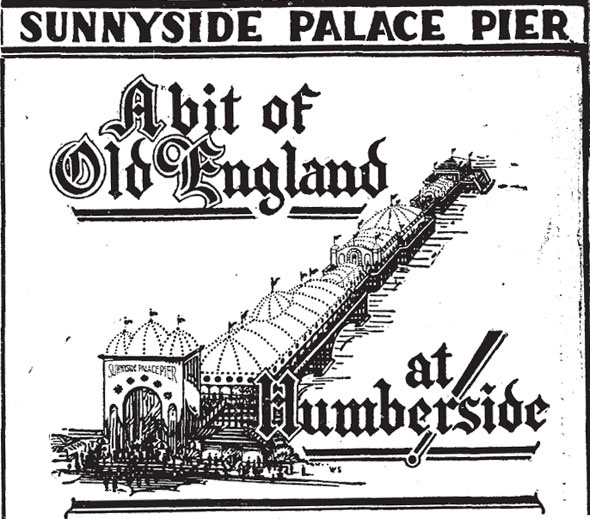
His classic steel and wood design called for a 80-metre dance hall with room 3,000 couples, a "palace of fun" with games of skill and ice and roller skating, a bandstand complete with 1,500 hammocks, and, on its tip, a theatre surrounded by shops and a boardwalk with berths for three lake steamers. The whole thing was projected to cost $1.25 million.
No sooner had Westacott submitted his plan, trouble began brewing behind the scenes. The expected funding proved slow to materialize, so the PIC advertised $10 shares in the Toronto newspapers, promising handsome returns for the shrewd investor. "Pleasure piers are not an experiment," read the advertising copy. "For over half a century that have consistently earned unusually high dividends."
"Toronto, with its much larger population than any city boasting a Pier, lends itself to the All-Year-Round success of the Pier," another read. "This is further assured by the proximity of 42,000,000 [it really said 42 million] people, for whom a visit to Toronto and the Pier would constitute an ideal motor trip."
Another promised the attraction would lure "50,000,000 [it really said 50 million] of the freest spenders in the world," though it didn't say where the people would come from.
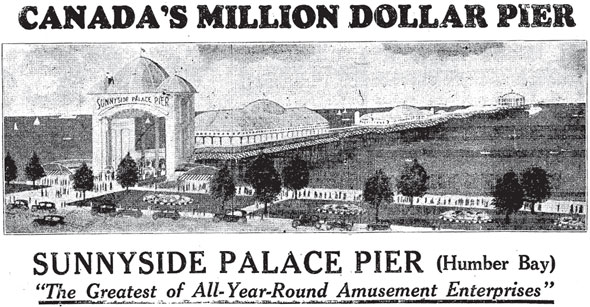
Alas, the idea of owning a piece of the Palace Pier wasn't a popular one, especially in the Depression, and sales were slow. In 1929, with only the foundation borings sunk into the muddy lake bed, Westacott sued his employers for $65,000, claiming breach of contract for failing to deliver the pier. He also sought an injunction preventing the PIC using, copying, or inspecting his plans. The PIC counter-sued for $100,000, alleging Westacott was insubordinate.
The legal action, lack of money, and by then the loss of a viable design delayed the pier another two years.
By the time former prime minister Arthur Meighen helped lay the cornerstone in 1931, the blueprints had been completely revised by architectural firm Craig and Madill. Westacott's jaunty entrance arch was gone, replaced by a thoroughly more modern structure with a yawning entrance hall that looked like a toothy mouth.
Construction had started, but the project was still only partially funded. Only the grand ballroom, the piece closest to the shore, was built as the grip of the Depression continued to tighten.
In the difficult financial climate, the Provincial Improvement Corporation fell behind on the property taxes and defaulted on the mortgage before the pier had opened for business. It was threatened with foreclosure, its planks untrodden, in 1937.
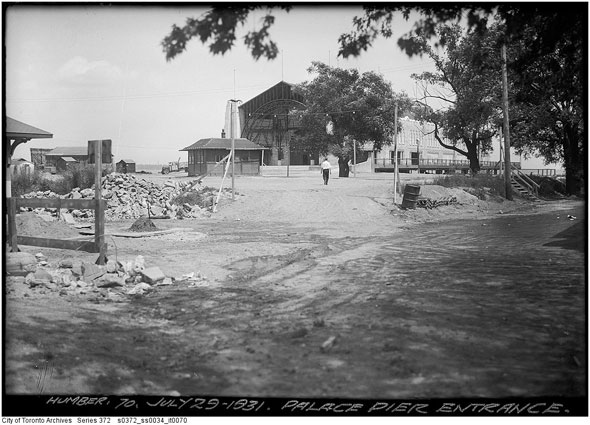
Against the odds, the Palace Pier opened for business in 1941, thirteen years after it was first proposed. One of the first bookings was a benefit event organized by USO favourite Bob Hope for the continent's war wounded, but the main hall was mainly used for roller skating.
It never became the swinging venue imagined in the 1920s, but the pier appeared to hold its own, despite its location away from the heart of the city. Duke Ellington, Peggy Lee, Count Besie, and a raft of other popular performers played there through the 1940s and 50s.
Ironically, the road the developers had hoped would deliver millions of eager customers to the doorstep turned out to be partially responsible for its undoing. Expansion of Lake Shore Boulevard required the road to be raised by two metres, leaving a steep bank down into the Palace Pier parking lot. Another lawsuit, this one against the Ontario department of highways, was launched.
Despite increasing isolation with the arrival of the Queensway, the pier hosted a variety of events, including live orchestras, dances, high school graduations, political rallies, and boxing matches, featuring the likes of George Chuvalo and Peter Schmidt. The building was briefly re-named the Queensway Ballroom, but the title was dropped to avoid confusion with the rival Club Kingsway.
"We used to get up to 3,000 people in a night," remembered Babe Karim, who leased the venue from its opening to 1949. "It was often so packed there wouldn't be much dancing-except for the jitterbugs."
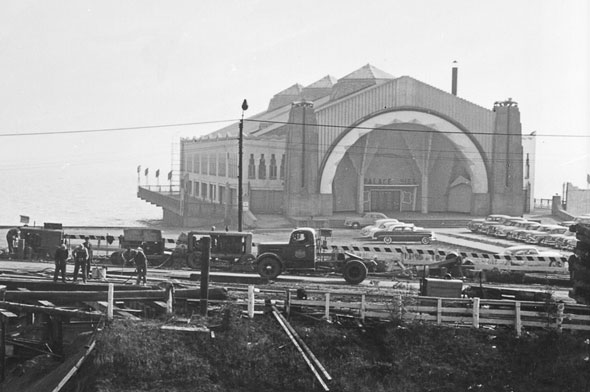
The Palace met its fate in the early hours of January 7, 1963, the way so many great piers of the age were destroyed.
The flames were visible for more than 80 kilometres and a radio station in Buffalo was inundated with calls from residents concerned about the orange glow in the night sky. 40 firefighters tackled the blaze for more than five hours but by sunrise the building was a smouldering shell. "We couldn't have saved the building even if we'd had a 1,000 units here," said Etobicoke fire chief Albert Flanagan.
Local politicians called for the amalgamation of Metropolitan Toronto's disparate fire services in the days that followed. "If we had a unified fire department, firefighting equipment from the whole west end of Metro would have automatically converged on the fire," alderman Fred Beavis told the Toronto Star.
During the blaze, Etobicoke firefighters were forced to call for help from New Toronto, with whom they had an agreement, leading to delays.
Investigators concluded the cause was likely a carelessly discarded cigarette or match, but in 1973 an accused arsonist claimed to have set the fire when he was 10 years old. It was never determined whether the 19-year-old was telling the truth.
Today, the site of the old Palace Pier is the site of two luxury condo towers.
Chris Bateman is a staff writer at blogTO. Follow him on Twitter at @chrisbateman.
Image: "Flood - Repairing Lake Shore Rd bridge," 1954, Toronto Public Library, 1954, S 1-2089B, "Palace Pier entrance, July 29, 1931, City of Toronto Archives, Fonds 200, Series 372, Subseries 34, Item 70, York University
Latest Videos
Latest Videos
Join the conversation Load comments
